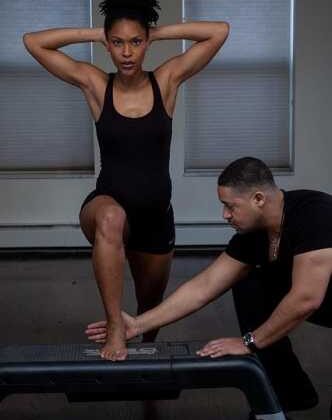Hey there, mama-to-be! Pregnancy is an incredible journey, but let’s be real-it can also be tough on your body and mind. Staying active and strong during these nine months doesn’t just help you feel amazing; it can make labor easier and speed up recovery, too. Whether you’re a fitness newbie or a seasoned pro, we’ve got some simple, feel-good pregnancy training tips to keep you moving safely and confidently. So grab your water bottle, slip on those comfy shoes, and let’s dive into how to stay strong and glowing throughout your pregnancy!
Choosing the Right Workouts to Keep You Energized and Safe
When it comes to pregnancy workouts, it’s all about finding exercises that boost your energy without overtaxing your body. Low-impact activities like walking, swimming, and prenatal yoga are fantastic choices because they keep your heart rate steady while protecting your joints.Listening to your body is key-if something feels uncomfortable or causes pain, it’s time to dial it back or switch to a gentler option. Also, don’t underestimate the power of breathing exercises and gentle stretching to keep both your muscles and mind relaxed throughout the day.
Keep your routine balanced by mixing cardio, strength, and flexibility workouts.here are some great options to consider:
- Walking: Easy on your joints and perfect for daily energy boosts.
- Swimming: Full-body workout with minimal risk of overheating or injury.
- Pelvic floor exercises: essential for postpartum recovery and childbirth preparation.
- Light strength training: Using bodyweight or light dumbbells to maintain muscle tone.
| Workout Type | Energy Level Impact | Safety Notes |
|---|---|---|
| Swimming | High | Supports body, prevents overheating |
| Walking | Moderate | Low impact, easy to adapt pace |
| Yoga | Moderate | Focuses on breathing and stretching |
| Strength Training | Variable | Use light weights, avoid heavy lifting |

How to Listen to Your Body and Avoid overdoing It
Pregnancy is a unique journey, and tuning into your body’s signals is the key to maintaining a safe and effective workout routine. rather of pushing through discomfort, prioritize how you feel moment-to-moment. Your body might give you gentle reminders, like a slight twinge or a drop in energy, which are significant cues to pause, modify, or slow down. Embrace the idea that rest is just as vital as movement-*listening* isn’t about stopping completely, but about adapting with care and kindness towards your changing needs.
Keeping a checklist handy during your workouts can help you stay aligned with your body’s messages:
- Hydration status: Feeling thirsty? Time for a water break!
- Breathing patterns: Struggling to maintain a conversation? Ease up.
- Muscle soreness vs. sharp pain: Soreness is okay, sharp pain is a no-go.
- Fatigue level: Tiredness accumulating? Consider a gentler session.
| Body signal | What to Do |
|---|---|
| Mild cramping | Stop and rest, try gentle stretching |
| Dizziness or lightheadedness | Pause, sit down, hydrate instantly |
| Excessive shortness of breath | Take a break; slow your pace |
| Sudden sharp pain | Discontinue exercise and consult your healthcare provider |

Simple Strength Moves for a Healthy Baby Bump
Embracing strength training during pregnancy can work wonders-not just for your body but also for your baby bump’s comfort and support. Focus on compound moves that engage multiple muscle groups, like squats, modified push-ups, and standing rows. These exercises help maintain posture, improve circulation, and reduce common pregnancy aches. Remember to listen to your body and modify ranges of motion as your bump grows, prioritizing balance and stability over heavy lifting.
Incorporate these gentle yet effective moves into your routine:
- Wall Squats: Support your back against a wall and slowly squat to strengthen your legs and glutes without strain.
- Seated Dumbbell Rows: Using light weights, sit with good posture and pull your elbows back to tone your upper back.
- Pelvic Tilts: Lie on your back with knees bent, gently rocking your pelvis to ease lower back tension and build core awareness.
- Side-Lying Leg Lifts: Great for hip stability and strengthening your outer thighs while keeping you comfortable.
| Move | Target Area | Benefit |
|---|---|---|
| Wall Squats | Legs & Glutes | Builds strength & stability |
| Seated Rows | upper Back | Improves posture & reduces pain |
| Pelvic tilts | Core & Lower Back | Relieves tension & enhances mobility |
| Side Leg Lifts | Hips & Thighs | Strengthens stabilizers for balance |
Tips for Staying motivated when You’re Feeling Tired
Sometimes your body will scream for rest, making it tough to keep up with your workout routine, especially during pregnancy. When energy levels dip,try breaking your sessions into shorter,manageable bursts instead of pushing through long workouts. embrace gentle movement like stretching or prenatal yoga to stay active without overwhelming yourself. Surrounding yourself with a support system-whether it’s a workout buddy or an online community-can give you that extra boost to keep going. Remember, celebrating small wins like completing a single set or simply getting outside counts just as much!
- Set realistic goals: Adjust your plan based on how you feel each day.
- Keep essentials handy: Water, snacks, and comfy clothes make a big difference.
- Practice mindfulness: Take deep breaths and focus on how amazing you’re doing.
- Mix it up: Swap intense sessions for calming walks or swimming when needed.
| Time of Day | Recommended activity | Energy Level |
|---|---|---|
| Morning | Gentle Stretching | High |
| Afternoon | Short Walk | Medium |
| Evening | Relaxing Prenatal Yoga | Low |
Q&A
Pregnancy Training Tips: Stay Strong and Feel Amazing! – Q&A
Q: Can I really work out while I’m pregnant?
A: Absolutely! Unless your doctor says or else, staying active during pregnancy is super beneficial. It helps keep your energy up, eases aches, and preps your body for labor. Just listen to your body and don’t push too hard.
Q: What kinds of workouts are safe?
A: Think low-impact activities like walking, swimming, prenatal yoga, and light strength training. These keep you moving without stressing your joints or belly. Avoid anything with a high risk of falling or bouncing around too much.
Q: How often should I exercise?
A: Aim for about 150 minutes of moderate activity each week – that breaks down to roughly 30 minutes,five days a week. But hey, if 10- or 15-minute sessions feel more doable, that works too!
Q: Any tips to stay motivated?
A: Definitely! Find a workout buddy (even a virtual one), set small goals, and mix up your routine to keep things fun.Remember, you’re doing this for both you and your little one!
Q: What should I eat to fuel my workouts and pregnancy?
A: Focus on balanced meals with plenty of protein, healthy fats, and whole carbs. Hydration is key too-drink lots of water before, during, and after exercise.
Q: When should I stop exercising or see a doctor?
A: If you feel dizzy, short of breath, have sharp pains, bleeding, or contractions, pause and reach out to your healthcare provider immediately. Your safety always comes first.
Q: Can exercise help with labor and postpartum recovery?
A: For sure! Staying strong now can make labor feel more manageable and help your body bounce back faster after birth. Plus,it’s a great stress-reliever during all those pregnancy mood swings.
Q: Any final tips?
A: Trust yourself. Pregnancy changes your body daily, so some days you’ll feel amazing and other days you just want to nap. Keep moving, stay positive, and celebrate your incredible journey!
To Wrap it Up
And there you have it-your go-to guide for staying strong and feeling amazing throughout pregnancy! remember, every body is diffrent, so listen to yours, take it one day at a time, and don’t be afraid to ask for help when you need it. Keep moving, keep smiling, and enjoy this incredible journey. You’ve got this, mama! Stay tuned for more tips and tricks to make your pregnancy as awesome as possible.Until next time, take care and keep glowing! 🌟🤰💪











